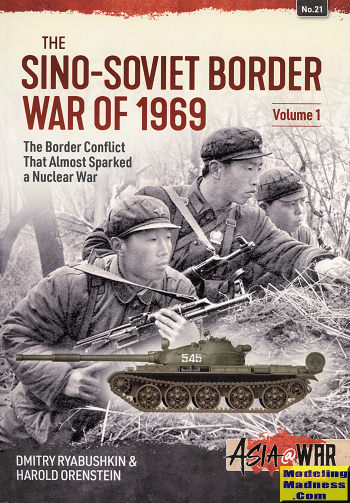 One of
the major sources of conflict are borders. Sometimes they are difficult to
determine due to where they are located. Other times they are the result of wars
where the loser forfeits land and following rulers feel it was unfairly taken.
In the mid 1800s, China and Russia had several small conflicts over border
areas. At the time, China was, unlike today, not in any sort of position to do a
land grab. Several treaties were signed with the Russians and borders
delineated. Oddly, the borders that ran where there were rivers, all ran on the
Chinese shoreline, rather than the deepest part of the river as is usually the
case.
One of
the major sources of conflict are borders. Sometimes they are difficult to
determine due to where they are located. Other times they are the result of wars
where the loser forfeits land and following rulers feel it was unfairly taken.
In the mid 1800s, China and Russia had several small conflicts over border
areas. At the time, China was, unlike today, not in any sort of position to do a
land grab. Several treaties were signed with the Russians and borders
delineated. Oddly, the borders that ran where there were rivers, all ran on the
Chinese shoreline, rather than the deepest part of the river as is usually the
case.
What this did was put all of the islands in these rivers
under Russian control. Most of the areas where this occurred were sparsely
populated and both Russian and Chinese used these generally uninhabited islands
as places to serve as places to dry fish they had caught in the rivers. There
were no border guards and no fences.
Move forward to the beginning of the PRC and Mao's iron
grip on China. Initially, most of the efforts of the Chinese were for the
leaders to solidify power and ensure that Chinese communism became the law of
the land. This eventually morped into the excesses of the Cultural Revolution
which started in 1966. It then became important to have the border
irregularities taken care of.
Move to 1969 and a spot along the Ussuri River in
northeastern China and Damansky Island. This was typical of the islands in the
area. However, it also happened to be only a few hundred yards from the Chinese
shore. While the Soviets had some border outposts in the area, there were none
on the island. The Ussuri froze solid during the winter, making it easy to cross
over on the ice. The Chinese massed troops on their shore. They then sent these
troops over to the western side of the island and hid in the trees and brush.
The Soviets, alarmed by the movement of troops, sent a patrol over to the island
where it was ambushed by the Chinese and most of the Soviets were killed.
Additional troops were sent and fierce battles took place before the Chinese
finally withdrew. Loss of life was fairly heavy, though the totals are quite
different depending on whose side you tend to believe. The Soviets claim to have
lost 32 border guards while the Chinese numbers are unknown as they removed all
but one of their dead during their retreat.
Now to be honest, the Soviets had been sending patrols
over to the island to forcibly remove Chinese fishermen from the island and had
also used boats with water hoses to discourage them from fishing in the river
for a few years. While the Chinese may have seen this as a reason for the
ambush, they were very much the aggressors in the coming events.
This was just the first of many other skirmishes during
1969 and almost led to a nuclear exchange between the Soviets and the Chinese.
As noted, this is the first volume covering this
conflict. The authors have done an incredible amount of research on the subject
and not only provide a ton of detail about the event and its aftermath, but also
provide a great historical background of what led up to these events. The book
provides a number of excellent photos and maps to help you with the sequence of
events.
July 2021
Copyright ModelingMadness.com. All rights reserved. No
reproduction in part or in whole without express permission.
Review book courtesy of
Casemate Publishing, where you can order your copy
at this
link.
If you would like your product reviewed fairly and quickly, please
contact
me or see other details in the
Note to
Contributors.
 One of
the major sources of conflict are borders. Sometimes they are difficult to
determine due to where they are located. Other times they are the result of wars
where the loser forfeits land and following rulers feel it was unfairly taken.
In the mid 1800s, China and Russia had several small conflicts over border
areas. At the time, China was, unlike today, not in any sort of position to do a
land grab. Several treaties were signed with the Russians and borders
delineated. Oddly, the borders that ran where there were rivers, all ran on the
Chinese shoreline, rather than the deepest part of the river as is usually the
case.
One of
the major sources of conflict are borders. Sometimes they are difficult to
determine due to where they are located. Other times they are the result of wars
where the loser forfeits land and following rulers feel it was unfairly taken.
In the mid 1800s, China and Russia had several small conflicts over border
areas. At the time, China was, unlike today, not in any sort of position to do a
land grab. Several treaties were signed with the Russians and borders
delineated. Oddly, the borders that ran where there were rivers, all ran on the
Chinese shoreline, rather than the deepest part of the river as is usually the
case.